.
 The easy elegance of late Italian film director and actor, Vittorio De Sica, is currently very relevant to the way the upmarket man dresses , even if the silhouette of de Sica’s suits is clearly from another age.
The easy elegance of late Italian film director and actor, Vittorio De Sica, is currently very relevant to the way the upmarket man dresses , even if the silhouette of de Sica’s suits is clearly from another age.
 e spalla camicia shoulder does not work for everyone and proves that just because something is trendy it does not mean its right for everyone .
e spalla camicia shoulder does not work for everyone and proves that just because something is trendy it does not mean its right for everyone .

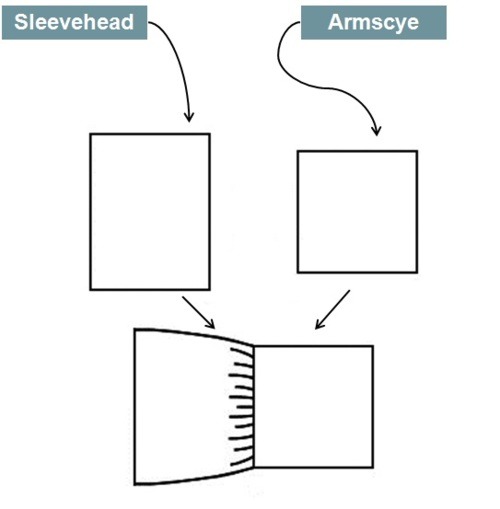
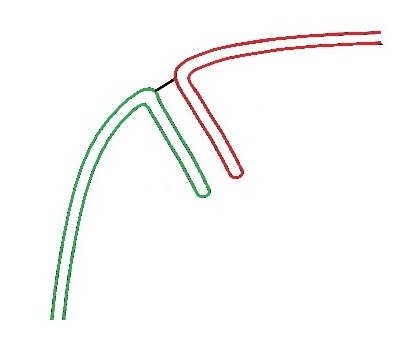
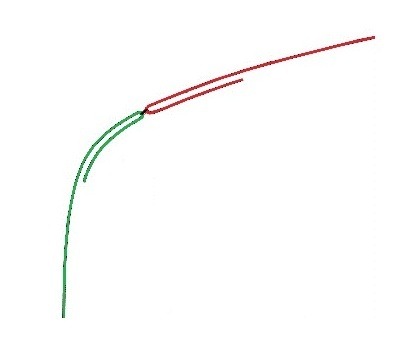
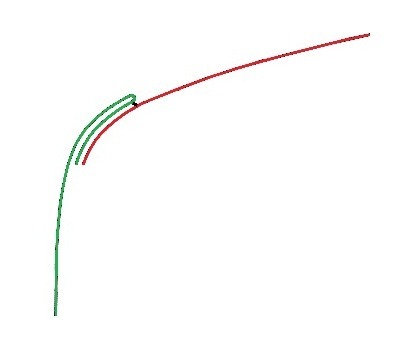
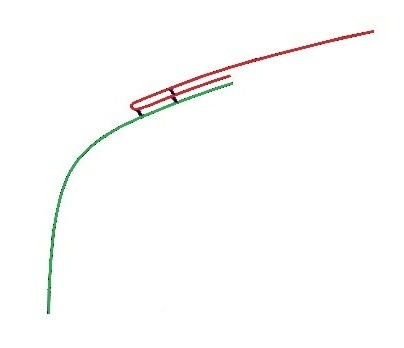

 Anyone seeking to emulate the Italian’s style will need to travel at least as far as Rubinacci’s
Anyone seeking to emulate the Italian’s style will need to travel at least as far as Rubinacci’s  London shop and be willing to demand the classic Neapolitan silhouette, rather than the current, rather leaner form. The aftermath of the heavy rock type look seventies died with thsure." "Off-the-peg." Three names describing three unique processes for creating the perfect suit. In order to spend your money wisely, you need to be informed about the key differences between the three tailoring methods. Knowing what you're getting will allow you to adjust your expectaat film .For me, this is a perfect film. Beautifully photographed (sensational use of the wide screen format), amazing performances - a story, directed with great tact, that's complex, mysterious and wholly engaging. Polanski's film rewards repeat viewing especially for the clothes but at that time I knew nothing about where I could get the clothes done exactly like the film . I did not have enough money for saville Row and was not too happy about what I could have made with my money as a teenager so I began a life long research into tailoring and material .Bespoke tailoring." "Made-to-meations and help you choose the best suit for you.
London shop and be willing to demand the classic Neapolitan silhouette, rather than the current, rather leaner form. The aftermath of the heavy rock type look seventies died with thsure." "Off-the-peg." Three names describing three unique processes for creating the perfect suit. In order to spend your money wisely, you need to be informed about the key differences between the three tailoring methods. Knowing what you're getting will allow you to adjust your expectaat film .For me, this is a perfect film. Beautifully photographed (sensational use of the wide screen format), amazing performances - a story, directed with great tact, that's complex, mysterious and wholly engaging. Polanski's film rewards repeat viewing especially for the clothes but at that time I knew nothing about where I could get the clothes done exactly like the film . I did not have enough money for saville Row and was not too happy about what I could have made with my money as a teenager so I began a life long research into tailoring and material .Bespoke tailoring." "Made-to-meations and help you choose the best suit for you.
 The easy elegance of late Italian film director and actor, Vittorio De Sica, is currently very relevant to the way the upmarket man dresses , even if the silhouette of de Sica’s suits is clearly from another age.
The easy elegance of late Italian film director and actor, Vittorio De Sica, is currently very relevant to the way the upmarket man dresses , even if the silhouette of de Sica’s suits is clearly from another age.
The Neapolitan suits and jackets that he wore are the direct predecessors of the unstructured clothes that are currently the form of tailoring that feels most "modern".
The innovation made by the Neapolitan tailors of the Thirties, most notably by Vincenzo Attolini, then the tailor at Gennaro Rubinacci’s London House shop, was to radically deconstruct the heavy, stiff and structured suit jacket. The effect was to create a new garment that gave away little in terms of formality, but which looked and felt far more appropriate for the Neapolitan climate and lifestyle.
Attolini was inspired by the work of Rome’s Domenico Caraceni, a tailor known for making suits with soft lines. It is at this point, that Attolini abandons the more structured methods of suit-making that he learned from his training in London, even veering away from elements of British tailoring that Blassi favored, and creates a distinct jacket that can be recognized by the trained eye, as being “Neapolitan”.The reason for this most likely was that naples is a very hot place most of the year 

(the spalla camicia belowand above ) Giacomo Bruno is another tailor at the time who had been planning on entering the naval academy, but changes his course and works as an apprentice in Rome and Milan, later landing in Naples to open his own tailoring house. Perhaps borrowing from his training in Rome, Giacomo Bruno brings to Naples his own interpretation of Neapolitan style, and refers to suit-making as an art, rather than a craft. He refuses to call his store a tailoring shop, insisting that it be referred to as a “Art and Fashion” workshop.Vincenzo removes the coat pads and inner linings, adds his own fine details, and makes a jacket so light that it can be folded up to eight times…a revolution in tailoring that will lead to the invention of what he regarded as the modern jacket.

In knowing part of the story of Italian tailoring, it becomes easier to understand that just (above the naples shoulder works as it should) (note the plain grey suit , shorter jacket that just clears the buttocks , the jacket is nice and snug and trousers are not baggy)because a suit hails from Naples, it does not mean the that suit is a classic Neapolitan suit, as the roots of tailoring in Naples also include a very present early English influence, which is why Naples also crafts a substantial number of Roman style structured suits.
(note the plain grey suit , shorter jacket that just clears the buttocks , the jacket is nice and snug and trousers are not baggy)because a suit hails from Naples, it does not mean the that suit is a classic Neapolitan suit, as the roots of tailoring in Naples also include a very present early English influence, which is why Naples also crafts a substantial number of Roman style structured suits.
 (note the plain grey suit , shorter jacket that just clears the buttocks , the jacket is nice and snug and trousers are not baggy)because a suit hails from Naples, it does not mean the that suit is a classic Neapolitan suit, as the roots of tailoring in Naples also include a very present early English influence, which is why Naples also crafts a substantial number of Roman style structured suits.
(note the plain grey suit , shorter jacket that just clears the buttocks , the jacket is nice and snug and trousers are not baggy)because a suit hails from Naples, it does not mean the that suit is a classic Neapolitan suit, as the roots of tailoring in Naples also include a very present early English influence, which is why Naples also crafts a substantial number of Roman style structured suits.
(be careful with check jackets, many just dont work, this is not too bad though)In order to identify a classic Neapolitan Suit, pay attention to:
1. SOFT SHOULDERS (no padding, pleated sleeve head – spalla camicia or con rollino).
As the Neapolitan shoulder can be quite confusing to many, BespoKenN does an exceptional job illustrating the differences between two frequent Neapolitan shoulder constructions: 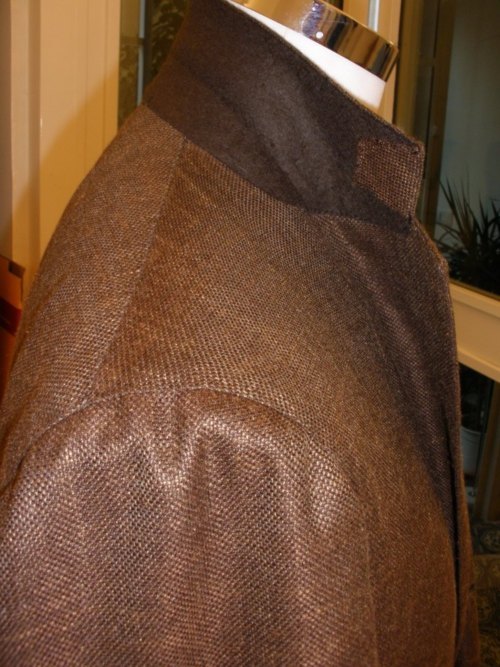 the spalla camicia and the con rollino):
the spalla camicia and the con rollino):
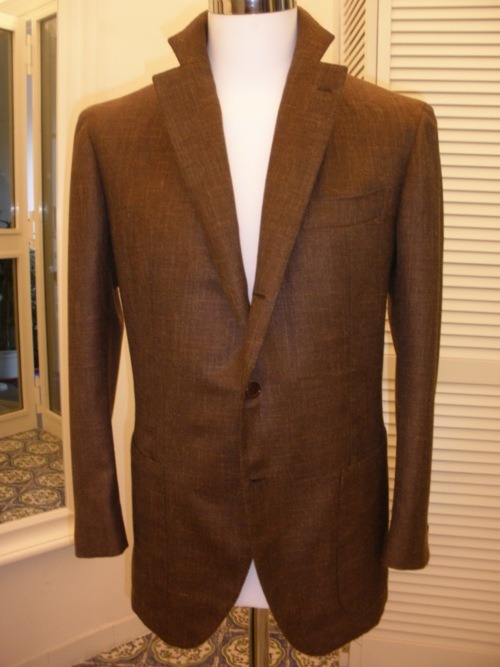
 the spalla camicia and the con rollino):
the spalla camicia and the con rollino):

Born in the Lazio region of Italy, De Sica grew up poor in Naples, and remains a poster boy 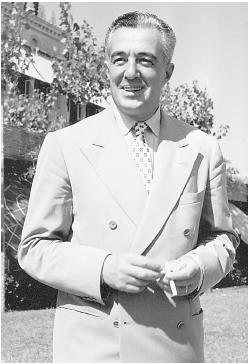 for the city’s distinctive tailoring. He was a customer of London House, now better known as Rubinacci. Photographs of De Sica on set in suit,
for the city’s distinctive tailoring. He was a customer of London House, now better known as Rubinacci. Photographs of De Sica on set in suit, tie and fedora strongly contrast with the intensely casual way that most film directors dress today. Although De Sica is known for the social awareness of his films he always dressed like a gentleman in beautifully cut overcoats, and suits with the soft waterfall shoulders that still
tie and fedora strongly contrast with the intensely casual way that most film directors dress today. Although De Sica is known for the social awareness of his films he always dressed like a gentleman in beautifully cut overcoats, and suits with the soft waterfall shoulders that still  distinguish Neapolitan tailoring culture.Spalla camicia adopts a technique that is used in shirt-making . By tucking the seam allowance against the shoulder (not against the sleeve), the jacket follows the shape of the body causing the fabric to fall naturally from the
distinguish Neapolitan tailoring culture.Spalla camicia adopts a technique that is used in shirt-making . By tucking the seam allowance against the shoulder (not against the sleeve), the jacket follows the shape of the body causing the fabric to fall naturally from the shoulder-down. There is an absence of padding in the shoulder and a natural puckering that is formed flowing down from the sleeve head, since sleeves are cut wider at the top with excess cloth eased into the shoulder and armhole–a look thought of as a fault to some, and pure poetry in motion to others. Notice how the shoulder is knocked down, with no appearance of padding.
shoulder-down. There is an absence of padding in the shoulder and a natural puckering that is formed flowing down from the sleeve head, since sleeves are cut wider at the top with excess cloth eased into the shoulder and armhole–a look thought of as a fault to some, and pure poetry in motion to others. Notice how the shoulder is knocked down, with no appearance of padding.
 for the city’s distinctive tailoring. He was a customer of London House, now better known as Rubinacci. Photographs of De Sica on set in suit,
for the city’s distinctive tailoring. He was a customer of London House, now better known as Rubinacci. Photographs of De Sica on set in suit, tie and fedora strongly contrast with the intensely casual way that most film directors dress today. Although De Sica is known for the social awareness of his films he always dressed like a gentleman in beautifully cut overcoats, and suits with the soft waterfall shoulders that still
tie and fedora strongly contrast with the intensely casual way that most film directors dress today. Although De Sica is known for the social awareness of his films he always dressed like a gentleman in beautifully cut overcoats, and suits with the soft waterfall shoulders that still  shoulder-down. There is an absence of padding in the shoulder and a natural puckering that is formed flowing down from the sleeve head, since sleeves are cut wider at the top with excess cloth eased into the shoulder and armhole–a look thought of as a fault to some, and pure poetry in motion to others. Notice how the shoulder is knocked down, with no appearance of padding.
shoulder-down. There is an absence of padding in the shoulder and a natural puckering that is formed flowing down from the sleeve head, since sleeves are cut wider at the top with excess cloth eased into the shoulder and armhole–a look thought of as a fault to some, and pure poetry in motion to others. Notice how the shoulder is knocked down, with no appearance of padding.
Con rollino (or “with roll”) jackets are made by taking excess fabric from around the sleeve head, and forming a roll that bulks up the area and pushes the sleeve head upwards, creating a bump that gives the same appearance as roping. Sometimes this bump or roll can be quite pronounced, and other times, not as obvious.MINIMAL (SILK) LINING INSIDE THE JACKET
As the climate in Naples can be sultry, if not at times stifling, a lot of attention is focused on making the lightest and coolest ensemble possible, while still upholding a good suit structure. Because of this, a Neapolitan suit coat will be of a light structure and will typically have a very small amount of lining inside, with the goal being that the coat should fit like a second skin.
PATCH POCKETS ( tasca a pignata)
The lower patch pockets on a Neapolitan jacket are modeled after the tasca a pignata style, and when done in its purest form, are easily recognizable with a rounded-bottom and a unique shape.
A Tasca a Pignata Neapolitan patch pocket(again we can see here a jacket not really suited to the build of this guy who seems to have sloping shoulders) (above another who needs a jacket with more padding). THE CHEST POCKET IS CUT A BARCHETTA (in a boat shape)
(above another who needs a jacket with more padding). THE CHEST POCKET IS CUT A BARCHETTA (in a boat shape)
 e spalla camicia shoulder does not work for everyone and proves that just because something is trendy it does not mean its right for everyone .
e spalla camicia shoulder does not work for everyone and proves that just because something is trendy it does not mean its right for everyone .
The barchetta curved welt breast pocket on a new bespoke Napolisumisura (Mina Adamo) sports jacket.
5. BUTTONS : 3 on 2 roll
On this 3-button (with two buttons working) single-breasted coat, the third nonworking button/button hole is inserted into the lapel to give more structure and create a larger belly inside the lapel roll. This is referred to as the “tre buttoni su due” and is a detail you can only have in a handmade jacket, as the buttonhole worked into the lapel is made upside-down.
Of course, the 3 on 2 is not exclusive to Neapolitan tailoring, and can be witnessed in Paris or London.
6. A HIGHER NOTCH AND GORGE SETTING
A higher gorge and notch is likely to be seen in a Neapolitan Jacket, but once again, it is not exclusive to the tailoring style, as houses such as Cifonelli in Paris are also known for raising the gorge and notch.
7. DOUBLE HANDMADE BACKSTITCH ON LAPEL AND POCKETS
The typical double backstitch on the Neapolitan lapel is called Doppia Impuntura (Sartoria Caliendo, Naples, credit:The Rake Online)
8. THE FINAL CUT
As demonstrated by Luca Rubinacci, the front dart on the coat extends all the way (avoid anything like this jacket , it hardly ever works in this strange brown check, the tie looks bad as well) to the bottom
(avoid anything like this jacket , it hardly ever works in this strange brown check, the tie looks bad as well) to the bottom hem to create a more streamlined look, the back is cut with a (above a perfect suit)
hem to create a more streamlined look, the back is cut with a (above a perfect suit) reasonable amount of waist suppression, sleeves are tapered with overlapping,
reasonable amount of waist suppression, sleeves are tapered with overlapping,  or “kissing” buttons, and the overall jacket is slightly shorter than a classic English jacket.It seems that with each hour the Englishman spends attending to the fine
or “kissing” buttons, and the overall jacket is slightly shorter than a classic English jacket.It seems that with each hour the Englishman spends attending to the fine (above really bad choice of jacket, shirt tie combination)details of dressing, the Italian gentleman will spend an equal amount of time
(above really bad choice of jacket, shirt tie combination)details of dressing, the Italian gentleman will spend an equal amount of time  ( a good casual look )making it look as if he has not attended to the fine details of dressing. And, perhaps this is part of the reason that Neapolitan tailoring continues to endure, since it not only describes a specific style, but also an attitude towards
( a good casual look )making it look as if he has not attended to the fine details of dressing. And, perhaps this is part of the reason that Neapolitan tailoring continues to endure, since it not only describes a specific style, but also an attitude towards  putting others at ease, being naturally elegant, and a spirit of not-so-accidental nonchalance.When talking about Neapolitan tailoring, the discussion will invariably lead to the most famous feature of a Neapolitan jacket - the soft shoulder. The soft shoulder is a Neapolitan specialty, but it is not in itself the sole criterion that defines a Neapolitan jacket - not all Neapolitan tailors use it, and certainly not all tailors who use it are Neapolitan.
putting others at ease, being naturally elegant, and a spirit of not-so-accidental nonchalance.When talking about Neapolitan tailoring, the discussion will invariably lead to the most famous feature of a Neapolitan jacket - the soft shoulder. The soft shoulder is a Neapolitan specialty, but it is not in itself the sole criterion that defines a Neapolitan jacket - not all Neapolitan tailors use it, and certainly not all tailors who use it are Neapolitan.
 (avoid anything like this jacket , it hardly ever works in this strange brown check, the tie looks bad as well) to the bottom
(avoid anything like this jacket , it hardly ever works in this strange brown check, the tie looks bad as well) to the bottom hem to create a more streamlined look, the back is cut with a (above a perfect suit)
hem to create a more streamlined look, the back is cut with a (above a perfect suit) reasonable amount of waist suppression, sleeves are tapered with overlapping,
reasonable amount of waist suppression, sleeves are tapered with overlapping,  or “kissing” buttons, and the overall jacket is slightly shorter than a classic English jacket.It seems that with each hour the Englishman spends attending to the fine
or “kissing” buttons, and the overall jacket is slightly shorter than a classic English jacket.It seems that with each hour the Englishman spends attending to the fine (above really bad choice of jacket, shirt tie combination)details of dressing, the Italian gentleman will spend an equal amount of time
(above really bad choice of jacket, shirt tie combination)details of dressing, the Italian gentleman will spend an equal amount of time  ( a good casual look )making it look as if he has not attended to the fine details of dressing. And, perhaps this is part of the reason that Neapolitan tailoring continues to endure, since it not only describes a specific style, but also an attitude towards
( a good casual look )making it look as if he has not attended to the fine details of dressing. And, perhaps this is part of the reason that Neapolitan tailoring continues to endure, since it not only describes a specific style, but also an attitude towards  putting others at ease, being naturally elegant, and a spirit of not-so-accidental nonchalance.When talking about Neapolitan tailoring, the discussion will invariably lead to the most famous feature of a Neapolitan jacket - the soft shoulder. The soft shoulder is a Neapolitan specialty, but it is not in itself the sole criterion that defines a Neapolitan jacket - not all Neapolitan tailors use it, and certainly not all tailors who use it are Neapolitan.
putting others at ease, being naturally elegant, and a spirit of not-so-accidental nonchalance.When talking about Neapolitan tailoring, the discussion will invariably lead to the most famous feature of a Neapolitan jacket - the soft shoulder. The soft shoulder is a Neapolitan specialty, but it is not in itself the sole criterion that defines a Neapolitan jacket - not all Neapolitan tailors use it, and certainly not all tailors who use it are Neapolitan.
If we refer to the diagram below, we can see that there are several other common design elements to a Neapolitan jacket aside from the soft shoulder (A). Neapolitan jackets are often made with larger arms (B), wider lapels (C), more open quarters (D), and are often shorter than their British counterparts (E). 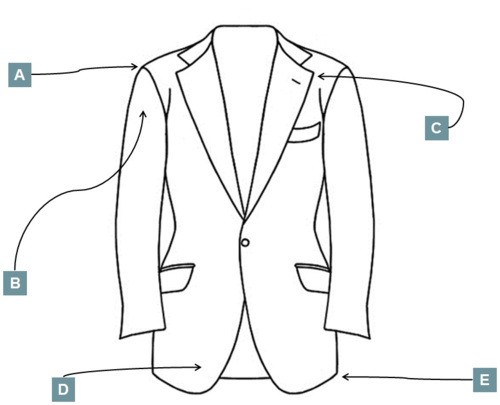 The famous soft shoulder that Neapolitan jackets are renowned for are created through the use of minimal (and sometimes non-existent) padding and canvas interlining. By using less padding, Neapolitan tailors are able to create a garment with a natural shoulder that is softer, lighter and airier compared to the typical English jacket.
The famous soft shoulder that Neapolitan jackets are renowned for are created through the use of minimal (and sometimes non-existent) padding and canvas interlining. By using less padding, Neapolitan tailors are able to create a garment with a natural shoulder that is softer, lighter and airier compared to the typical English jacket.
 The famous soft shoulder that Neapolitan jackets are renowned for are created through the use of minimal (and sometimes non-existent) padding and canvas interlining. By using less padding, Neapolitan tailors are able to create a garment with a natural shoulder that is softer, lighter and airier compared to the typical English jacket.
The famous soft shoulder that Neapolitan jackets are renowned for are created through the use of minimal (and sometimes non-existent) padding and canvas interlining. By using less padding, Neapolitan tailors are able to create a garment with a natural shoulder that is softer, lighter and airier compared to the typical English jacket.
The minimal use of padding is not the only defining feature of a Neapolitan-style shoulder, as mentioned earlier, Neapolitan coats are often made with wider sleeves. These wide sleeves contribute to a visual cue that has become a telltale sign of Neapolitan tailoring - shirring in the sleevehead.

Shirring refers to the pleat-like folds at the seam where the sleeve joins the shoulder. In a Neapolitan coat, the upper sleeve is cut much larger than the armscye, and since there is more cloth on one side than the other, the fabric puckers and gathers.

A discussion from the London Lounge explains the rational for the dramatic size difference:
This is not done for aesthetics, although the devotees of the style certainly claim it is beautiful. To the unknowing eye, it looks sloppy, like a sign of inferior tailoring. But it most definitely is not. It is not to everyone’s taste, however, and de gustibus, as the saying goes. Anyway, it is done for comfort and freedom of movement. Classic Neapolitan coats have very small armholes, very close shoulders, and relatively lean bodies—more roomy than a Roman or Continental coat, but less than traditional Savile Row, and much less than what is typically made in America. The large upper sleeve combined with the tight armhole, draped chest, fullness over the blades, and soft front canvas give the arms a most free range of movement. The coat can be worn all day, in almost any circumstance. The heat might get to you, but you will be able to do whatever it is that you need to do without having to take off your coat. (Within reason.)
A term often used to describe Neapolitan tailoring is spalla camicia (Italian for “shirt shoulder”) and manica camicia (Italian for “shirt sleeve”), both of these terms refer to a particular method of attaching the sleeve of a jacket to the body - it must be noted that although spalla camicia is associated with Neapolitan tailoring, it by itself does not define a Neapolitan jacket.
Spalla camicia refers to the usage of shirt-making techniques to attach a sleeve to the body of the jacket, but before we talk about that, we must revert back to the basics and talk about seams.

The diagram above represents the seam on a jacket where the sleeve joins the shoulder. The shoulder is shown in red, the sleeve in green, and the stitch that joins the two pieces in black. As you can imagine, it is difficult to attach two pieces of cloth right at their edges; so some excess width (called a seam allowance) is used to join the two pieces of cloth together.
After the two pieces are joined together. The seam allowance must be manipulated and tucked away. One method is to press and fold the seam allowance back onto itself (a.k.a “Pressed Open”, or “Open Seam”):

A second method to manage the seam allowance is to tuck the allowance from both pieces down onto the sleeve (a.k.a “Pressed Close”, or “Closed Seam”):

"Regular" (non spalla camicia) jackets manage the seam allowances of the sleevehead via these two methods; the second method is slightly more elegant as the excess bulk pushes the sleevehead up, creating a "bump" similar to roping. The Italians call this con rollino (“with roll”).
With spalla camicia, the seam allowances are folded and tucked back onto the shoulder, like so:

This is the same method employed by shirtmakers to attach the sleeves of dress shirts; spalla camicia simply refers to the utilization of shirt-making techniques in jackets. By tucking the seam allowance against the shoulder and not against the sleeve, the jacket is allowed to follow the shape of the body and fall naturally.

(above a wonderful spring summer look)The shape of Vittorio De Sica’s suits is, by contemporary standards, rather generous. However, not only did their shape flatter his substantial frame, a quality that will always retain its currency, but their shape also speaks of an easy, elegant life far more eloquently than today’s shrunken silhouettes.but vwhat people forget is that the neopolitan shoulder is not for everyone, you do actually need shoulders like the guy below to be able to pull it off or you will come across as a shoulderless wonder. If you do have shoulders then it can be a flattering casual look.
to be able to pull it off or you will come across as a shoulderless wonder. If you do have shoulders then it can be a flattering casual look.
If you dont have good shoulders then get a jacket which is made to give you some like William Holden here in a superbly tailored jacket to be able to pull it off or you will come across as a shoulderless wonder. If you do have shoulders then it can be a flattering casual look.
to be able to pull it off or you will come across as a shoulderless wonder. If you do have shoulders then it can be a flattering casual look. Anyone seeking to emulate the Italian’s style will need to travel at least as far as Rubinacci’s
Anyone seeking to emulate the Italian’s style will need to travel at least as far as Rubinacci’s  London shop and be willing to demand the classic Neapolitan silhouette, rather than the current, rather leaner form. The aftermath of the heavy rock type look seventies died with thsure." "Off-the-peg." Three names describing three unique processes for creating the perfect suit. In order to spend your money wisely, you need to be informed about the key differences between the three tailoring methods. Knowing what you're getting will allow you to adjust your expectaat film .For me, this is a perfect film. Beautifully photographed (sensational use of the wide screen format), amazing performances - a story, directed with great tact, that's complex, mysterious and wholly engaging. Polanski's film rewards repeat viewing especially for the clothes but at that time I knew nothing about where I could get the clothes done exactly like the film . I did not have enough money for saville Row and was not too happy about what I could have made with my money as a teenager so I began a life long research into tailoring and material .Bespoke tailoring." "Made-to-meations and help you choose the best suit for you.
London shop and be willing to demand the classic Neapolitan silhouette, rather than the current, rather leaner form. The aftermath of the heavy rock type look seventies died with thsure." "Off-the-peg." Three names describing three unique processes for creating the perfect suit. In order to spend your money wisely, you need to be informed about the key differences between the three tailoring methods. Knowing what you're getting will allow you to adjust your expectaat film .For me, this is a perfect film. Beautifully photographed (sensational use of the wide screen format), amazing performances - a story, directed with great tact, that's complex, mysterious and wholly engaging. Polanski's film rewards repeat viewing especially for the clothes but at that time I knew nothing about where I could get the clothes done exactly like the film . I did not have enough money for saville Row and was not too happy about what I could have made with my money as a teenager so I began a life long research into tailoring and material .Bespoke tailoring." "Made-to-meations and help you choose the best suit for you.





No comments:
Post a Comment